 | TODAY IN SCIENCE HISTORY NEWSLETTER - 21 JUNE |
| Feature for Today |
 On 21 Jun 1886, the foundation stone of the Tower Bridge in London, England was laid (over a time capsule) by the Prince of Wales. The need to cross the River Thames at this point had become increasingly urgent for many years, and finally the necessary Act was passed in 1885. On 21 Jun 1886, the foundation stone of the Tower Bridge in London, England was laid (over a time capsule) by the Prince of Wales. The need to cross the River Thames at this point had become increasingly urgent for many years, and finally the necessary Act was passed in 1885.For more about this structure, read The Tower Bridge from The Romance of Modern Engineering (1908). |
| Book of the Day | |
| |
| Quotations for Today | |
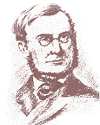 | "Whether or not you agree that trimming and cooking are likely to lead on to downright forgery, there is little to support the argument that trimming and cooking are less reprehensible and more forgivable. Whatever the rationalization is, in the last analysis one can no more than be a bit dishonest than one can be a little bit pregnant. Commit any of these three sins and your scientific career is in jeopardy and deserves to be." |
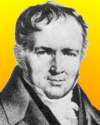 | "A distinguished writer (Sim�on Denis Poisson) has thus stated the fundamental definitions of the science: 'The probability of an event is the reason we have to believe that it has taken place, or that it will take place.' 'The measure of the probability of an event is the ratio of the number of cases favourable to that event, to the total number of cases favourable or contrary, and all equally possible' (equally like to happen). From these definitions it follows that the word probability, in its mathematical acceptation, has reference to the state of our knowledge of the circumstances under which an event may happen or fail. With the degree of information which we possess concerning the circumstances of an event, the reason we have to think that it will occur, or, to use a single term, our expectation of it, will vary. Probability is expectation founded upon partial knowledge. A perfect acquaintance with all the circumstances affecting the occurrence of an event would change expectation into certainty, and leave neither room nor demand for a theory of probabilities." |
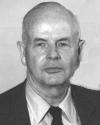 | "I remember my father had a sermon he used to preach when we were in Florida, in which he gave a reference to the Southern Cross—about the stars, the colors, in the Southern Cross, which thrilled me very much. I must have been around 5 years old. ... Now, it turns out that the Southern Cross itself does have one red star, together with three blue ones." |
| QUIZ | |
| Before you look at today's web page, see if you can answer some of these questions about the events that happened on this day. Some of the names are very familiar. Others will likely stump you. Tickle your curiosity with these questions, then check your answers on today's web page. | |
| Births | |
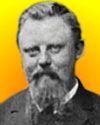 |  Willem Hendrik Keesom, born 21 Jun 1876, was a Dutch physicist who was a pioneer in cryogenics and was the first to solidify a certain element (1926). In work done with M Wolfke, after studying discontinuities in several properties of this element at very low temperatures (1927) they suggested that it may be due to a phase change. They called the element above the transitional in its form I and the helium below the transition in form II. In 1932, he produced a temperature just two degrees above absolute zero (-272� C or -457.6� F). Willem Hendrik Keesom, born 21 Jun 1876, was a Dutch physicist who was a pioneer in cryogenics and was the first to solidify a certain element (1926). In work done with M Wolfke, after studying discontinuities in several properties of this element at very low temperatures (1927) they suggested that it may be due to a phase change. They called the element above the transitional in its form I and the helium below the transition in form II. In 1932, he produced a temperature just two degrees above absolute zero (-272� C or -457.6� F). What was this element? What was this element? |
 |  On 21 Jun 1781, a French mathematician was born who is known for his work on definite integrals, advances in Fourier series, electromagnetic theory, and probability. The (?) Distribution (1837) describes the probability that a random event will occur in a time or space interval under the conditions that the probability of the event occurring is very small, but the number of trials is very large so that the event actually occurs a few times. His works included applications to electricity and magnetism, and astronomy. His name is also known for the (?) integral, (?) equation in potential theory, (?) brackets in differential equations, (?) ratio in elasticity, and (?) constant in electricity. On 21 Jun 1781, a French mathematician was born who is known for his work on definite integrals, advances in Fourier series, electromagnetic theory, and probability. The (?) Distribution (1837) describes the probability that a random event will occur in a time or space interval under the conditions that the probability of the event occurring is very small, but the number of trials is very large so that the event actually occurs a few times. His works included applications to electricity and magnetism, and astronomy. His name is also known for the (?) integral, (?) equation in potential theory, (?) brackets in differential equations, (?) ratio in elasticity, and (?) constant in electricity. What is the man's name that replaces the "(?)" above ? What is the man's name that replaces the "(?)" above ? |
| Deaths | |
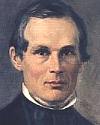 |  A Swedish physicist (1814-1874) was a founder of spectroscopy for whom the unit of length equal to 10-10 metre, was named. In pioneering studies, in 1853, he observed and studied the spectrum of hydrogen which was the foundation for Balmer�s formula. From studies of the solar spectrum, he announced in 1862, that hydrogen is present in the Sun's atmosphere. A Swedish physicist (1814-1874) was a founder of spectroscopy for whom the unit of length equal to 10-10 metre, was named. In pioneering studies, in 1853, he observed and studied the spectrum of hydrogen which was the foundation for Balmer�s formula. From studies of the solar spectrum, he announced in 1862, that hydrogen is present in the Sun's atmosphere.  Can you name this man? Can you name this man? |
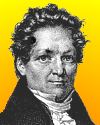 |  Louis-Jacques Thenard (1777-1857) was a French chemist who was the first to isolate a certain element in collaboration with Gay-Lussac. His independent achievements included studies of esters (1807), the discovery of hydrogen peroxide (1818), and work in organophosphorus compounds. He also produced a pigment known as Thenard's blue, which is stable at high temperatures and so can be used in porcelain. (The element he isolated is a non-metallic element in the second period of the Periodic Table.) Louis-Jacques Thenard (1777-1857) was a French chemist who was the first to isolate a certain element in collaboration with Gay-Lussac. His independent achievements included studies of esters (1807), the discovery of hydrogen peroxide (1818), and work in organophosphorus compounds. He also produced a pigment known as Thenard's blue, which is stable at high temperatures and so can be used in porcelain. (The element he isolated is a non-metallic element in the second period of the Periodic Table.)  What element did he isolate? What element did he isolate? |
| Events | |
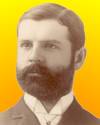 |  On 21 Jun 1834, an inventor received a patent for his reaping machine, recognized as the first such practical machine. He demonstrated his machine in 1831 at a public trial in a field near Walnut Grove, Va. The owner of the field, fearing the machine would rattle the heads of his wheat, stopped the demonstration, which was then moved to a more level field on the neighbour's farm. In 1902, his harvesting machine company merged with five other leading farm implement manufacturers to form the International Harvester Company. On 21 Jun 1834, an inventor received a patent for his reaping machine, recognized as the first such practical machine. He demonstrated his machine in 1831 at a public trial in a field near Walnut Grove, Va. The owner of the field, fearing the machine would rattle the heads of his wheat, stopped the demonstration, which was then moved to a more level field on the neighbour's farm. In 1902, his harvesting machine company merged with five other leading farm implement manufacturers to form the International Harvester Company. Can you name this inventor? Can you name this inventor? |
 |  On 21 Jun of a certain year, the first successful long-playing microgroove phonograph records were introduced to the public by Columbia Records. Made of nonbreakable Vinilyte plastic, they were designed for the new speed of 33-1/3 r.p.m. Columbia originated the term "LP" itself, which was copyrighted On 21 Jun of a certain year, the first successful long-playing microgroove phonograph records were introduced to the public by Columbia Records. Made of nonbreakable Vinilyte plastic, they were designed for the new speed of 33-1/3 r.p.m. Columbia originated the term "LP" itself, which was copyrighted In what decade was the LP introduced? In what decade was the LP introduced? Now try a harder question - who was the famous violinist featured on this first LP? |
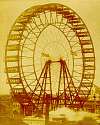 |  On 21 Jun 1893, the first Ferris wheel premiered at Chicago's Columbian Exposition, America's third world's fair. It was invented by George Washington Ferris, a Pittsburgh bridge builder, for the purpose of creating an attraction like the Eiffel Tower in Paris. Ferris didn't use rigid spokes: instead, he used a web of taut cables, like a bicycle wheel, supported by two 140 foot steel towers, on a 45 foot axle. The highest point of the wheel was 264 feet. On 21 Jun 1893, the first Ferris wheel premiered at Chicago's Columbian Exposition, America's third world's fair. It was invented by George Washington Ferris, a Pittsburgh bridge builder, for the purpose of creating an attraction like the Eiffel Tower in Paris. Ferris didn't use rigid spokes: instead, he used a web of taut cables, like a bicycle wheel, supported by two 140 foot steel towers, on a 45 foot axle. The highest point of the wheel was 264 feet. What was the full passenger capacity of the first Ferris Wheel? What was the full passenger capacity of the first Ferris Wheel? |
| Answers |
When you have your answers ready to all the questions above, you'll find all the information to check them, and more, on the June 21 web page of Today in Science History. Or, try this link first for just the brief answers. Fast answers for the previous newsletter for June 20: to depict the number and variety of genetic combinations; vitamins; Georges Lema�tre; virus; Valdez; the decade including the year 1840; Count Zeppelin. |
| Feedback |
 If you enjoy this newsletter, the website, or wish to offer encouragement or ideas, please send feedback by using your mail reader Reply button. If you enjoy this newsletter, the website, or wish to offer encouragement or ideas, please send feedback by using your mail reader Reply button. |
--
If you do not want to receive any more newsletters, Unsubscribe
To update your preferences and to unsubscribe visit this link


Δεν υπάρχουν σχόλια:
Δημοσίευση σχολίου